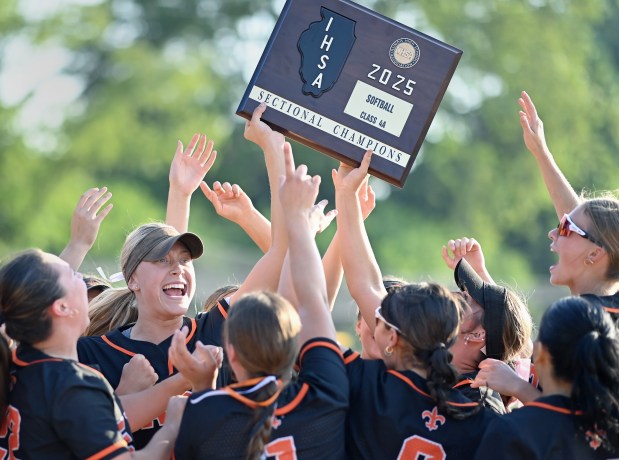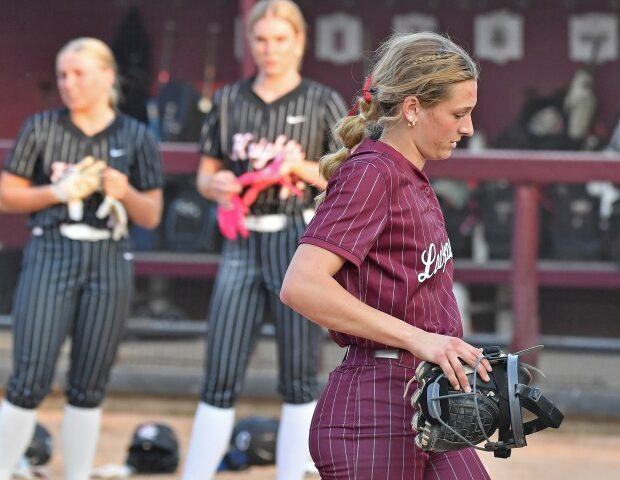Every week we publish a historic photo highlighting a story from Naperville’s past from the history archives of Naper Settlement.
World War II saw many manufacturing companies changing gears, producing items needed for fighting overseas. Car manufacturers, for example, began churning out jeeps, trucks, tanks and even planes.
In Naperville, the Kroehler Manfacturing Company was no exception when it came to helping our armed forces. The company in December 1941 signed a contract with the government to make 5,000 pieces of furniture for USO recreational centers used by servicemen and women.
Most of what Kroehler produced was based on materials for furniture, primarily wood and cloth – just as it had been doing for 50 years – but this wasn’t for domestic use. In April 1942, company officials signed a contract with the Doak Aircraft Company from California to manufacture wooden propellers. Wooden propellers were needed to replace aluminum ones on training planes, as aluminum was needed for other aspects of the war effort.
Today’s photo, taken in 1943, shows the uniforms that were worn by Kroehler’s female employees. All workers – except those in sewing and cutting – wore the sentry blue uniforms with matching caps.
By 1943, women composed 25% of Kroehler employees, and there were 785 women working in the company’s factory jobs in the US and Canada. Kroehler-Doak, which operated out of the fourth floor of the Naperville Plant, was staffed entirely women who made wooden propellers for radio-controlled planes. The company’s factories in Naperville and Kankakee also were called upon to develop a wooded filing cabinet, saving valuable steel for the war.
Each plant could produce 200 cabinets per day. They made 90,000 cabinets during the war, saving 7,500 tons of steel. It was more than hard work by Kroehler employees that helped our armed forces. Ninety percent of employees at the Naperville Plant purchased war bonds, raising money needed by the armed forces.
Recycling was in style even back then as in the first quarter of 1944, employees salvaged 15,605 pounds of wastepaper. Over the course of the war, Kroehler manufactured more than 200 new items for the war effort. The plant in Naperville manufactured 28 different items including rucksacks, dummy shells, lockers, cabinets, chairs, tables and ammunition boxes.
Sadly, given the horrible costs some paid, Kroehler was called upon to produce 8,304 prosthetic limbs. Ninety percent of those were wooden feet. Kroehler kept track of service by employees.
In January 1946, the Kroehler service flag included 1,077 Blue Stars for servicemen and 26 Gold Stars — for those killed in action — representing employees who had worked at company factories across the United States and Canada before serving their country.
After the war, in March 1946, Kroehler was approached by Hunter College, temporary home of the United Nations, which ordered 554 “luxuriously upholstered push-back” chairs. It took workers in Plant 1 in Naperville less than two weeks to complete the furniture order for the newly formed international organization. The impact of World War II was felt in many ways in Naperville.
By the fall of 1940, a total of 937 Naperville men ages 21 to 35 had registered for the draft. And Kroehler was not the only local business that helped.
The DuPage Boiler Company and the National Bag Company also had contracts with the War Department or were subcontracted to work with other companies.
In 1943, 100 lots near the Martin-Mitchell Historical Museum were made available for Victory Gardens for home-grown fruits and vegetables.
In 1943, the city of Naperville stop gathering tin cans for garbage collection so they could instead be prepared for salvage drives.
Those with relatives who lived during the war have probably heard about ration books which were used for gasoline and other items. Naperville residents signed up for ration books at Ellsworth School, Naper School and Naperville High School.
Although loved ones were far overseas, fighting in the Pacific and European theaters, Naperville residents were still able to send Christmas gifts to them.
In 1944, the deadline to do so was Oct. 15 which would ensure their timely arrival. Some 862 gifts were sent that year from the Naperville Post Office. And only 30 deliveries failed.
Librarian Matie Egermann presented a photographic display of local people in the service in Nichols Library. By July 1945, there were 557 pictures on display. Those photographs were later donated to the Martin Mitchell Museum and are now in the collection of the Naperville Heritage Society.
Grateful service personnel, knowing that Egermann loved dolls, sent dolls to her from around the world during the war. The Naperville Heritage Society has her collection of more than 500 dolls.
On May 8, 1945 – what is called V-E Day, short for Victory in Europe Day – celebrations erupted across our nation. That held true at Kroehler, too.
Just before fire sirens echoed throughout Naperville, the factory’s work whistle sounded 10 times to mark the surrender of Germany, ending the war in Europe.
And the Kroehler Manufacturing Company, which had a humble start in 1893 and eventually became one of the largest employers in Naperville, played a role in the victory. Kroehler, which in 1911 billed itself as the world’s largest upholstered furniture company, was in business for nearly 100 years until it was dissolved in 1981.
Andrea Field is the curator of history at Naper Settlement. For more information, go to www.NaperSettlement.org. Steve Metsch is a freelance reporter for the Naperville Sun.




